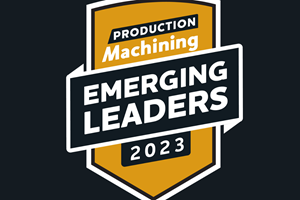2017 May be Tipping Point for Skilled Labor Shortage
Through the use of technology and improved learning techniques, employers now have cost-effective educational options that were not available 15 years ago.
For the first time since 2007, according to a November 2016 survey released by PeopleReady (a staffing firm that specializes in placing manufacturing workers), a labor shortage appears to be slowing job growth. Year-over-year job growth is now only at 1.6 percent, down from 2.3 percent in February 2015. During that same time, however, job openings remained at close to record levels. Employer demand for labor appears to be greater than the supply. And, the so-called silver tsunami of baby boomer retirements is starting to crash.
According to John Pulliam, PeopleReady senior financial analyst, the overall shortage is driven primarily by the aging baby boomers. However, for many blue collar job categories, the shortage is driven by an often overlooked trend: 10 million working age men missing from the labor force. To put that number into perspective, 10 million men represents 20 percent of the total workforce with a high school diploma or less.
National Public Radio (NPR.org) describes several drivers of this trend, which include manufacturing jobs going overseas, automation decreasing the number of low-skill jobs and a significant increase in incarcerations and felony convictions.
For those under-skilled workers who are seeking a better career path, there is a lack of training provided by manufacturers for entry-level workers.
In today’s global economy, manufacturers must keep a close eye on margins as they grapple with global competition. These thin margins often make a long-term investment in creating their own workforce talent pool difficult for employers because they see it as an expense on their profit and loss statement.
Manufacturing needs a mind-set shift regarding investing in human capital training. Forward-thinking employers need to treat training as a long-term investment instead of an expense, similar to new equipment purchases.
However, in the eyes of many industry observers, there is not a balance between equipment capital investments and investments in training the next generation workforce. Shops are not set up for long-term sustainable success. Many small to medium manufacturers are still relying upon hiring from competitors, bringing on gypsy employees who have worked at every shop in town or extending the capabilities of their current workforce with mandatory overtime. Traditional approaches are reactive, not proactive.
Through the use of technology and improved learning techniques, employers now have cost-effective educational options that were not available 15 years ago.
One company trying to help train potential machinists is our affiliate company, Skilled Labor Training Centers, in Troy, Michigan. We are able to train an entry-level CNC machinist in less than four months at employer cost of $6,000 per student. This $6,000 in training is a drop in the bucket compared with the actual missed opportunity cost of $75 per hour to have a machine sit empty when the shop has work. At an expense of $600 per machine, per shift, the cost of training could be wiped away in less than 12 weeks. This cost is a lot for a young person trying to get their manufacturing career off the ground and yet employers balk at paying for the training.
Therein lies the tipping point—students cannot afford training and employers don’t want to pay the minimal cost. The biggest objection we hear from employers regarding the training expense is that they do not want to pay for someone to be trained, only to have them leave for a better job opportunity. If a manufacturing company would embrace the newly trained employee, outline a career path that challenges and excites that employee while building a next generation culture, the employees would be very reluctant to leave.
This type of shift in how to view a new manufacturing employee may seem radical, but it is necessary. Retail and service-based businesses are already doing it. Manufacturers need to fall in step with the changing times or risk falling behind other employers who are courting the millennial employee.
Related Content
2023 Emerging Leaders Strengthen Their Staffs, Solve Problems
Superb critical thinking, top-notch leadership skills and a passion for building a strong team are a few of the common traits held by this year’s five Production Machining Emerging Leader award winners.
Read MoreSuccession Planning: Three 15-Minute Activities to Start Preparing for Tomorrow
Succession planning is planning for the future success of your business.
Read MoreCNC Machine Shop Employment Positions to Consider Beyond Machine Operators
Many machine shops have open machine operator positions to fill. But does it make sense for shops to also seek automation engineers, IT managers and assembly personnel?
Read MoreNew Thinking from the New Generation for the New Year
“We have to learn to think in a new way.” –Albert Einstein
Read MoreRead Next
5 Aspects of PMTS I Appreciate
The three-day edition of the 2025 Precision Machining Technology Show kicks off at the start of April. I’ll be there, and here are some reasons why.
Read MoreA Tooling Workshop Worth a Visit
Marubeni Citizen-Cincom’s tooling and accessory workshop offers a chance to learn more about ancillary devices that can boost machining efficiency and capability.
Read MoreEmerging Leaders Nominations Now Open
Here’s your chance to highlight a young person in your manufacturing business who is on the path to be a future leader moving your company forward.
Read More













.jpg;maxWidth=300;quality=90)








